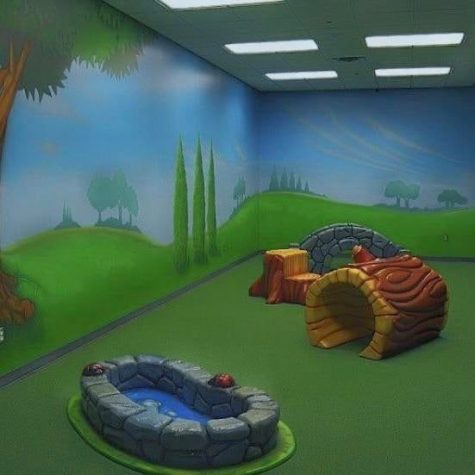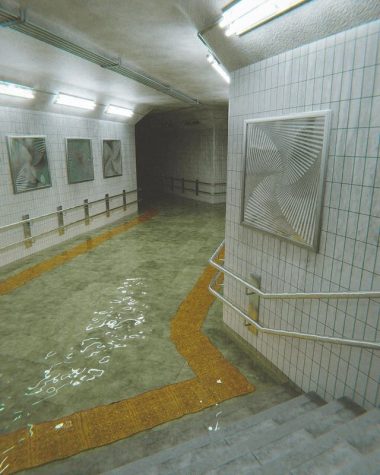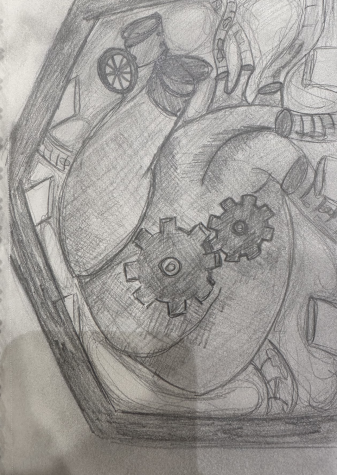Intro to Liminality
A Brief Analysis
If you’ve been around the internet for as long as I have, you’re probably no stranger to the plethora of unsettling images and videos littering different forums and message boards. Personally, myths such as “Slenderman” and “ Smile Dog” deeply disturbed me as a child, and set a trend for the horror tropes I fear the most. However, recently a new contender has entered the widely forgotten field of internet urban legends and creepypastas. The Backrooms, a fictional non-euclidean realm outside our physical perception.

Originally derived from an image posted on 4Chan, the location is described with early-2000’s video-game jargon. “If you’re not careful and you noclip out of reality in the wrong areas, you’ll end up in the Backrooms- where it’s nothing but the stink of old moist carpet, the madness of mono-yellow, the endless background noise of fluorescent lights at maximum hum-buzz, and approximately six hundred million square miles of randomly segmented empty rooms to be trapped in. God save you if you hear something wandering around nearby, because it sure as hell has heard you.” For those unfamiliar with no-clipping, think of it as the act of phasing through matter. The term was originally coined in video-game programming, and used frequently in computer sandbox games such as G-mod. Since the debut of The Backrooms, it has gained almost instant internet popularity and notoriety, with canonized contributions made daily, as well as fan-made video productions such as Backrooms- Missing persons, Into the Backrooms, and The Backrooms (Found Footage), short films I recommend to anyone as a jumping off point for this topic.
I could spend hundreds of pages detailing the lore of the thousands of Backrooms-related posts, however, there are much better video-essays you could watch to explain the experience of being inside- but I’m not here to explain the intricacies of head cannons. Instead, I’d like to take a look at the driving force behind what makes the Backrooms so enticing: Its liminality.

The Oxford definition of liminal is relating to a transitional or initial stage of a process and occupying a position at, or on both sides of, a boundary or threshold. Recently, the trend of finding spaces that fit this description has taken the internet by storm, arguably due to their inherent nostalgia-evoking imagery. As our generation gets older, our content evolves along with it, and as we age, we yearn for the rose-tinted childhood spaces we used to inhabit. So what makes a liminal space… liminal? Most are public locations that are commonly bustling with people and movement, but are left empty (usually with any amenities such as lights left running). Expecting company, but never finding it. This feeling is captured through camera angles showing swaths of negative space in order to show emptiness, something that can cause both comfort and fear- literally creating a liminal space between emotions. Subcategories of this include childhood locations that feel overwhelmingly nostalgic, places with bright colors desaturated after years of neglect, and picturesque suburbia utopia, all leading back to the transitional period in everyone’s life, where we yearn for the perfectionist de-reality of what children’s television programming taught us to expect. Finally, images that appear to contain infinite or non-euclidean geometry often fall into the realm of liminality.
Vacancy, neglect, impossibility. These are the fundamentals of capturing a glimpse of a liminal space. But why do we chase these feelings? Most often they fill a certain niche hole found in the memories of liminal periods, such as childhood- the most common transitional period of life itself. In fact, the most common theme among photos such as these are the accompanying captions, along the lines of “you’ve been here before” and “we’ve all seen this” or “do you remember this place?” because of their tendency to evoke a sappy, sentimental response, despite never having witnessed the actual location. The amalgamation of memory slush inside of our brains are simply unfit to log all thoughts and experiences that inhabit our day-to-day lives, so we sort of “simplify” them, picking out important details and pieces that represent the memory as a whole. Many of these quirks contained in the limited space in our heads are conveniently tucked away within liminal images, such as the bright colors of nursery furnishings, or the darkened hallway to your parents bedroom, making it impossibly easy to find a common memory within the image.

By the nearing end of this analysis, I hope I’ve been able to turn you towards the ever-rising excitement of this genre of photography, as well as the stories inspired by them. A quick YouTube search of the phrase is the most suitable entry-point from this essay, and a great fandom to enter into, with enough online entries to fill the entirety of the backrooms.







